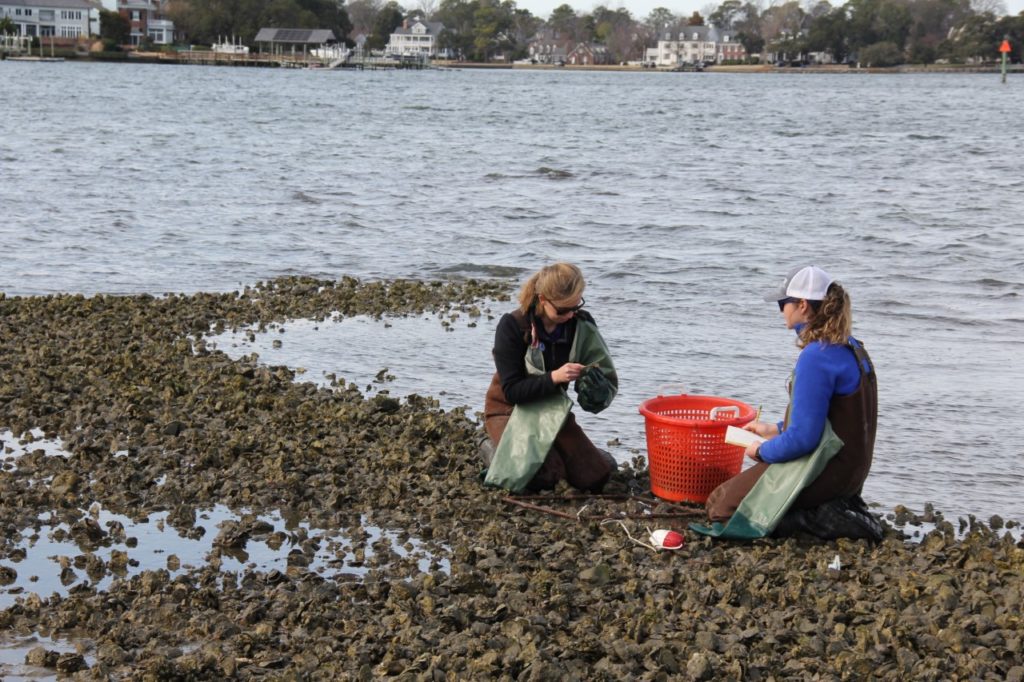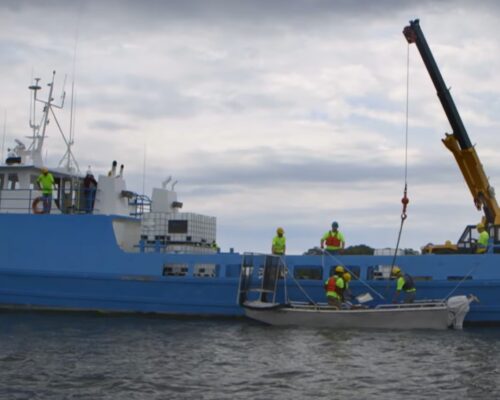Oyster restoration efforts throughout the Chesapeake Bay have been hugely successful, but one unlikely tributary shows some of the greatest success of all. Its location may surprise you, because it is not some undeveloped still-wild waterway. It is the urban Lafayette River in the city of Norfolk, Virginia.
New numbers released by the Chesapeake Bay Foundation (CBF) show that the number of oysters per square meter on the Lafayette Reef in 2021 were more than seven times the number needed to be considered a healthy reef.
The Lafayette was originally called Tanner’s Creek, named after Daniel Tanner who settled in the area in the 1600s. The change to Lafayette River came at a time when federal dollars were available to improve rivers, not creeks, so the creek became a river with the stroke of a pen. The Lafayette covers almost 14 square miles and literally cuts right through the center of Norfolk. Most of the shore is residential, though the drainage includes business and industrial areas.
The first oyster restoration effort on the Lafayette started in the 1990s. Mounds of oyster shells were deposited in the river near the Hampton Boulevard bridge. Live oysters, raised by volunteer oyster gardeners, were placed on the reef. That reef proved successful, so more were added. There is a large restoration reef behind Norfolk International Terminals, with additional reefs in places like the Hermitage Museum and behind the Virginia Zoo. Today, the Lafayette contains 32 acres of restored reefs and 48 acres of historical reefs.
CBF considers 50 oysters per square meter the minimum needed for a healthy reef. That first reef along Hampton Boulevard had 92 oysters per square meter in a 2017 survey. In a just-released 2021 survey, that number jumped to an astonishingly healthy 365 oysters per square meter.
Other reefs in the Lafayette are also doing well. A reef near Knitting Mill Creek, one of the dirtiest parts of the river, had a count of 253 in 2021. The oyster population in the Lafayette is so healthy that the river is considered fully restored.
This success is due to a variety of factors. The Elizabeth River Project (ERP) has a River Star program that encourages homeowners to pick up pet waste and reduce or eliminate yard chemicals. There have been a variety of other efforts, such as planting buffers, installing living shorelines, restoring wildlife habitat, and reducing pollution.
Joe Rieger, ERP Deputy Director of Restoration, reports, “The large scale of oyster restoration efforts in the Lafayette is one reason for this success. Also, the Lafayette has favorable currents.” The 48 acres of historical reefs are important as well. There was no commercial harvest on those reefs for decades. Most locals did not know they even existed. Reiger adds, “These wild oysters, left alone so long, have grown very large. Large oysters produce much more spat (baby oysters) than smaller, younger oysters. We get high spat sets in the Lafayette.”
The list of partners in this success is long. In addition to CBF and ERP, participants include the City of Norfolk, National Oceanic and Atmospheric Administration, Restore America’s Estuaries, National Fish and Wildlife Foundation, the Army Corps of Engineers, Lafayette Wetlands Partnership, Christopher Newport University, Hampton Roads Sanitation District, the Rotary Club of Norfolk, Virginia Marine Resources Commission, and Virginia Institute of Marine Science.
Healthy oyster reefs are the foundation for a healthy river ecosystem. Oyster reefs attract small fish, crabs, and worms that attract larger fish. Larger fish attract raptors and otters. Red drum and seatrout have become abundant in the Lafayette. Ospreys and eagles patrol overhead. Loons and canvasbacks visit each winter. Otters and even minks now live along the shorelines, right in the heart of Norfolk.
-Kendall Osborne




